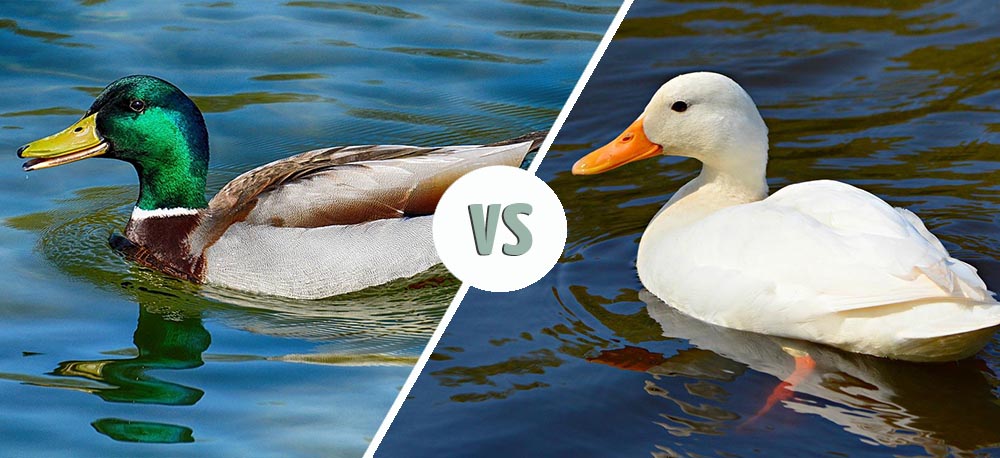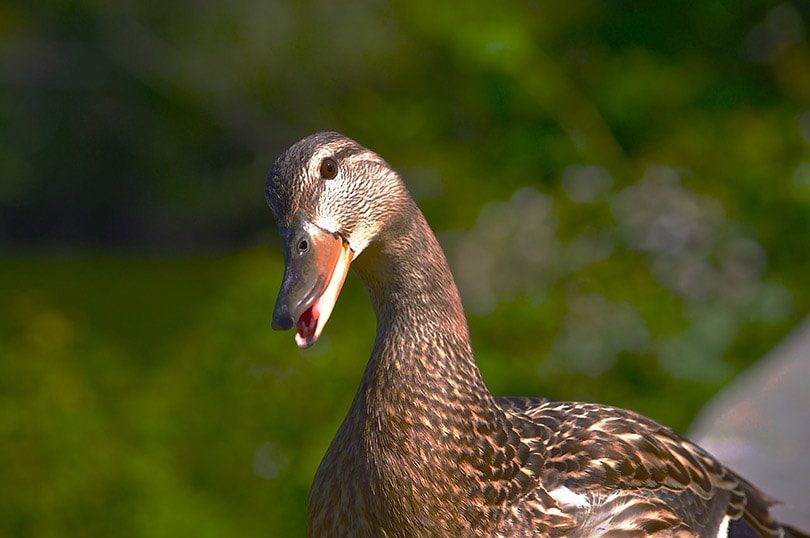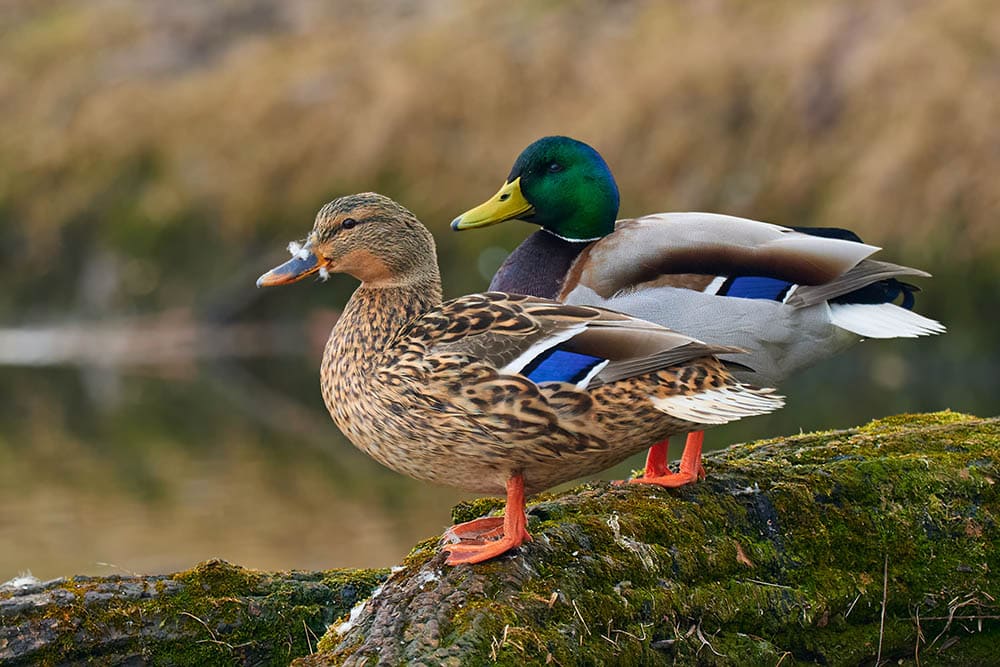Mallard vs. Duck: Is There a Difference?
Last Updated on

Many people who first begin learning about ducks believe that Mallard is the same thing as a duck. Although Mallard is one species of duck, there are many other species to be aware of. In other words, “duck” is the general term for the animal, but Mallard is a specific species of duck.
To learn more about the difference between a Mallard and a duck, keep reading.

Visual Differences

At a Glance
- Origin: North America
- Size: 1.6–3.5 pounds
- Lifespan: 5–10 years
- Domesticated?: Yes
- Origin: China
- Size: Depends on species
- Lifespan: Depends on species
- Domesticated?: Only 2 species are domesticated
Mallard Overview
The Mallard is one of the most common species of ducks in the United States. They can be found in every state, part of Mexico, and most of Canada. If you ever visit a park and see ducks, you are most likely seeing a Mallard.

Characteristics & Appearance
Mallards are one of the most identifiable species of ducks. The males are especially easy to spot. Males have gray flanks and a black tail. The head is gleaming green. The female, in contrast, is a bit more subdued. She has stripes of brown and black.
Uses
Mallard ducks are one of the only species of ducks that are domesticated. These ducks are often kept on farms for eggs and meat, but they can also be found in the wild. Mallard ducks are one of the most hunted ducks because of how common they are.
Classification
The scientific name for the Mallard is Anas platyrhynchos. Based on this name, you know that the Mallard belongs to the order of ducks, geese, swans, and screamers and the family of ducks specifically.

Ducks Overview
While Mallards are a specific species of ducks, the term “duck” is used to describe any species that belongs to the family of ducks. Some common ducks include the Mallard, American Black Duck, Mottled Duck, Northern Shoveler, Wood Duck, and Teal.

Characteristics & Appearance
Ducks come in many colors and sizes. Some ducks are bigger than the Mallard, while others are smaller than the Mallard. It ultimately depends on the species you are looking at.
Uses
The vast majority of ducks are not used for any specific purpose today. Most ducks are wild, and some are even protected. There are only two species of domesticated ducks, including the Mallard and the Muscovy Duck. These ducks are used for meat and eggs.
Classification
If you are talking about a duck, you are specifically talking about a bird that belongs to the class Aves, order Anseriformes, and family Anatidae. There are dozens of different duck Genera, which is the fancy word for species.
What Are the Differences Between Mallards and Ducks?
The difference between a Mallard and a duck ultimately comes down to the genus. All ducks have the same order and family. The Mallard is just one specific genus within the family. Many other ducks belong to a different genus or species.
To sum up the difference between a Mallard and a duck, a Mallard is a type of duck. If you are looking at a Mallard, you are always looking at a duck. However, you might not be looking at a Mallard if you are not sure of the species of duck.

Is a Mallard Right for You?
If you’re asking yourself whether you should get a Mallard or a duck, you are asking a redundant question. After all, Mallard is a duck. That being said, you can ask if a Mallard is better than another duck species.
For most people, the Mallard is the best duck species you can get. It is one of the few duck species that are domesticated. You can use Mallards for eggs, meat, or hunting. The same cannot be true of many other duck species.
We hope that this article clarified some confusion about the terms Mallard and duck.
Featured Image Credit By: (L) Alexa, Pixabay | (R) MabelAmber, Pixabay
About the Author Robert Sparks
Robert’s obsession with all things optical started early in life, when his optician father would bring home prototypes for Robert to play with. Nowadays, Robert is dedicated to helping others find the right optics for their needs. His hobbies include astronomy, astrophysics, and model building. Originally from Newark, NJ, he resides in Santa Fe, New Mexico, where the nighttime skies are filled with glittering stars.
Related Articles:
10 Types of Hummingbirds in Arkansas (With Pictures)
8 Types of Hummingbirds in Nebraska (With Pictures)
5 Types of Hummingbirds in Idaho (With Pictures)
3 Types of Hummingbirds in Mississippi (With Pictures)
8 Types of Hummingbirds in Kansas (With Pictures)
5 Types of Hummingbirds in West Virginia (With Pictures)
5 Types of Hummingbirds in Ohio (With Pictures)
Where Do Nuthatches Nest? Nuthatch Nesting Habits Explained
